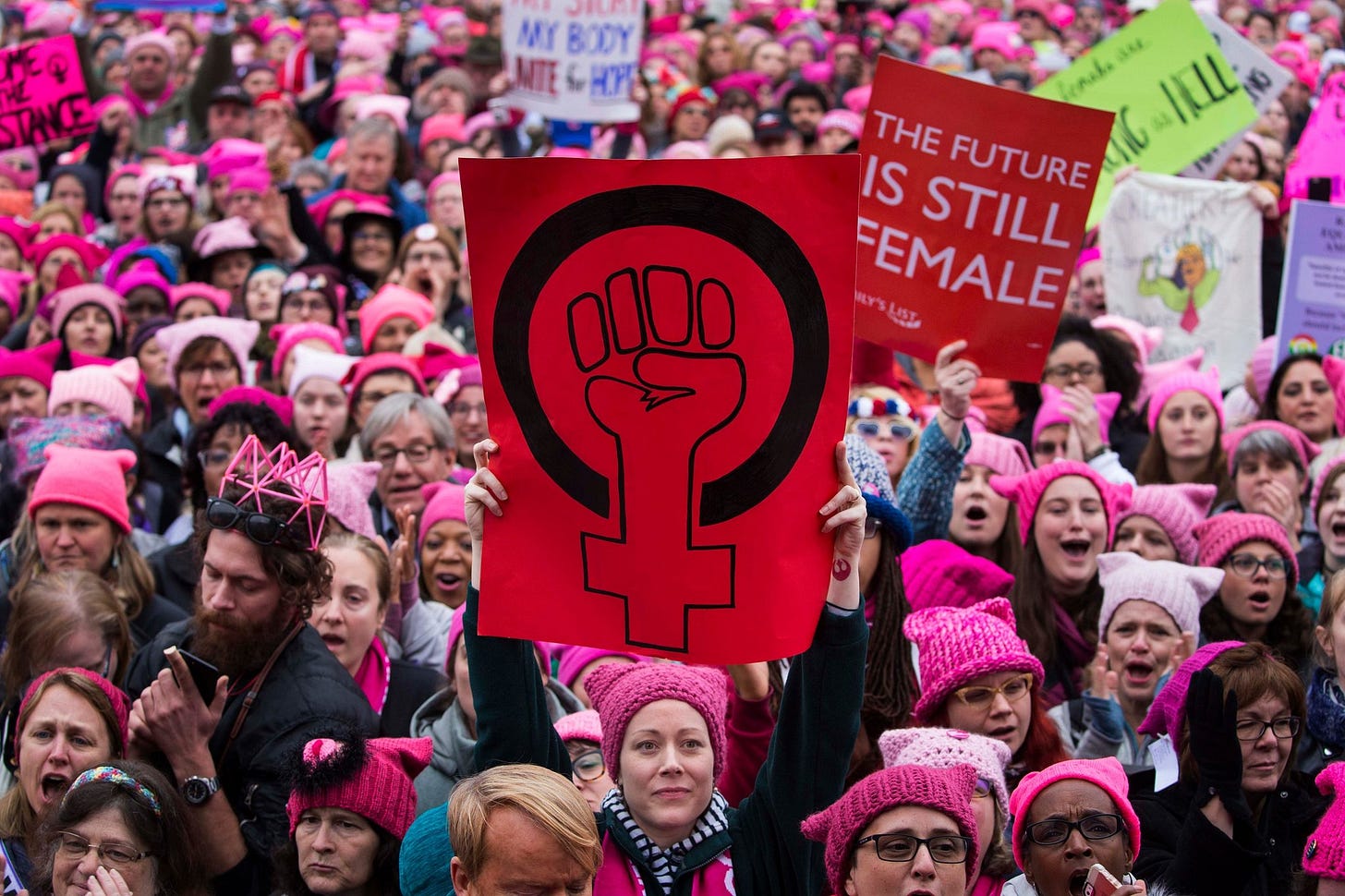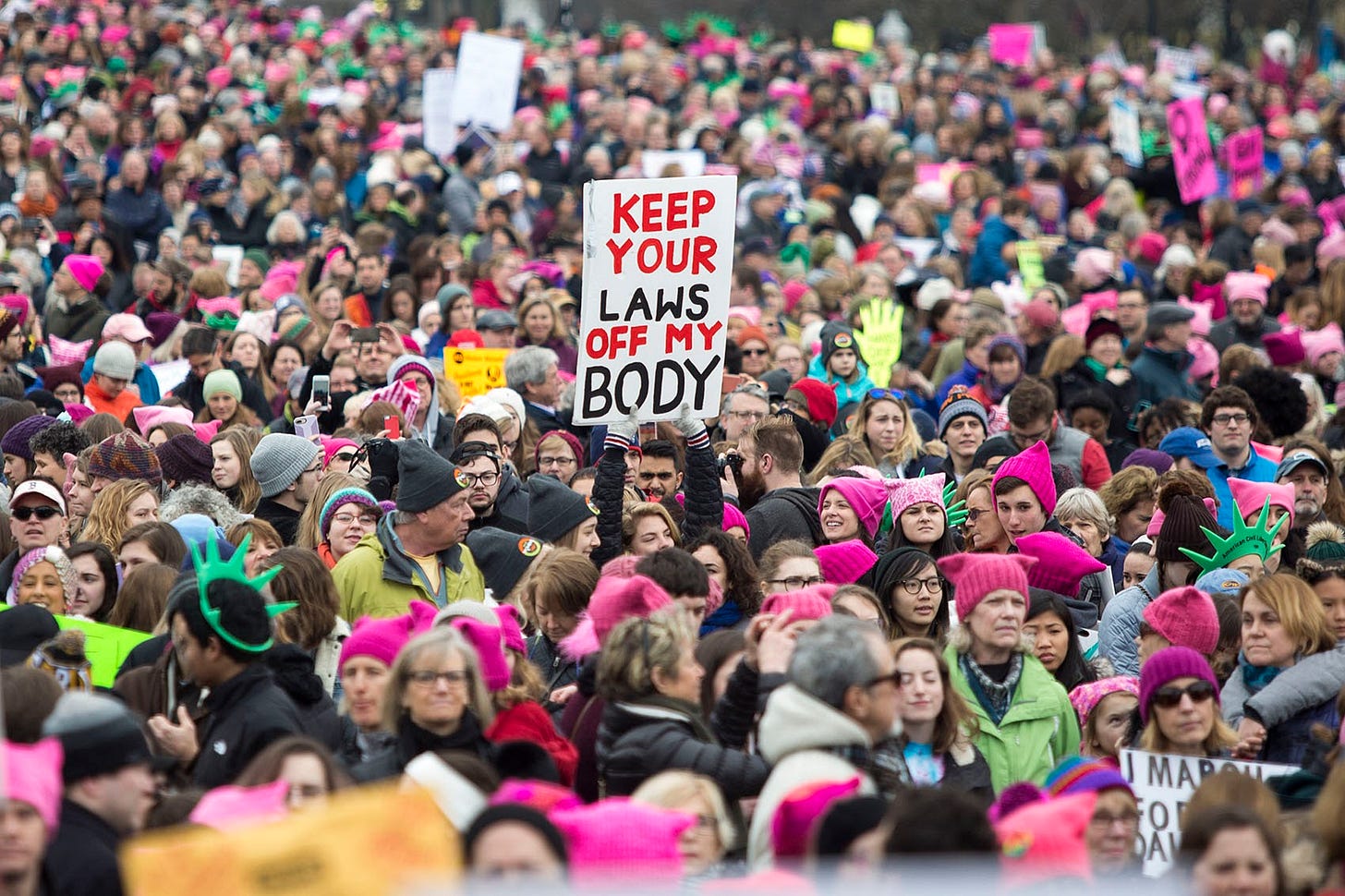“Together we stand.. Divided we fall.”
Hey You, Pink Floyd
But the coup de grâce for the Women’s March and its leadership landed on December 11, 2018, when Tablet, the online daily devoted to Jewish news, ideas, and culture, detonated an incendiary exposé accusing Tamika Mallory and Carmen Perez of anti-Semitism. Mallory had already weathered criticism for attending an event featuring Nation of Islam leader Louis Farrakhan, who’d reportedly unleashed anti-Semitic remarks. Refusing to publicly disavow Farrakhan, Mallory defended herself in a piece for NewsOne, insisting her activism compelled her to “go into difficult spaces,” and adding pointedly, “It is impossible for me to agree with every statement or share every viewpoint of the many people who I have worked with or will work with in the future.”
Yet Tablet went further still, unearthing evidence that Nation of Islam members had served as security and drivers for the march’s organizers, while casting a harsh light on the group’s finances, particularly around how donations were managed. More damningly, Tablet alleged the co-organizers themselves had voiced anti-Semitic sentiments. According to Leah McSweeney and Jacob Siegel, writing in Tablet, Mallory and Perez purportedly first aired such views “about Jewish people and their role in slavery” during their very first meeting—less than a week after the march was initially proposed. Similar accusations emerged regarding a January meeting held after the march.
Mallory, Bob Bland, and Cassady Fendlay, the Women’s March communications director, all vigorously denied these charges. Mallory specifically told Tablet, “there was no particular conversation about Jewish women, or any particular group of people,” either at the initial meeting or later at her apartment. Still, the fallout from the article proved catastrophic. A month earlier, Teresa Shook, whose Facebook post had originally sparked the march, had already gone public with calls for the leadership to resign. She wrote unequivocally: “Bob Bland, Tamika Mallory, Linda Sarsour and Carmen Perez of Women’s March, Inc. have steered the Movement away from its true course,” charging they’d allowed “anti-Semitism, anti-LGBTQIA sentiment and hateful, racist rhetoric” to infect their platform by refusing to distance themselves from groups promoting those views. After Tablet’s revelations, critical scrutiny exploded from both the Right and the Left.
And yet, despite these controversies, the Women’s March 2018 went ahead on January 20, drawing somewhere between 1.8 and 2.6 million protesters. But by the time the second anniversary rolled around, attendance had plummeted; the 2019 Women’s March, held on January 19, drew between 665,324 and 735,978 participants across various U.S. cities. Many on the Left chose to emphasize the marches’ achievements, waving off the controversies as mere leadership squabbles or ignoring them altogether.
There’s no denying the first Women’s March on Washington left an immense, groundbreaking imprint. Beyond sheer scale, it catapulted into mainstream consciousness the crucial concept of “intersectionality,” coined by law professor Kimberlé W. Crenshaw to describe the complex interplay of race and gender in shaping Black women’s experiences. The march’s Unity Principles were unequivocal: “We must create a society in which women—in particular Black women, Native women, poor women, immigrant women, Muslim women, and queer and trans women—are free and able to care for and nurture their families, however they are formed, in safe and healthy environments free from structural impediments.” The march also spurred unprecedented numbers of women to run for—and win—public office, a trend epitomized by the Virginia House of Delegates elections in November 2017, which saw the state’s first Latina, transgender, and Asian-American female delegates.
These remarkable milestones, and the subsequent unraveling of the movement, illustrate precisely why it’s critical to resist the extremes of radical identity politics and reject the partisan whitewashing or hedging that often accompanies it. Obsessed with right-wing hysteria over campus activism and social-media flame wars, too many on the Left inadvertently stumble into the culture-war traps their opponents lay, fueling conflicts whose very existence they publicly deny. Yet campuses and social media are neither the only nor the most decisive battlefields in the pursuit of justice; those battles unfold in the streets and at the ballot box, and precisely there, the Left has been stumbling.
Few episodes lay bare the woke Left’s narcissism as starkly as the two-year saga of the Women’s March. How could a leadership composed of Black, Latina, Muslim-American, and White women—supported by 200 conveners, 500 partner organizations, and 24 drafters of the Unity Principles—have been more inclusive? Can a single symbol ever unify all women, or any diverse coalition? Is the pink pussy hat inherently problematic if it’s optional and alternatives are embraced? What about trans women of color who wore it willingly and claimed they never once felt excluded for their trans identity or race at the Washington march? Does intention always trump impact, and who gets to police intentions anyway?
How can a Left fixated on a single symbol hope to counter a Right armed with a vast arsenal of symbols—from national flags and religious traditions to mythic histories and imagined homelands? Must every potential ally produce a notarized inventory of privileges before joining the fight for justice? Isn’t there space for mistakes, growth, and genuine disagreement? Was Bob Bland mistaken when she told critics the march “was just the beginning of a learning process we all had to go through,” emphasizing that longstanding intercommunity tensions wouldn’t be solved overnight? Are we obliged to rank oppressions and label dissenters as bigots? Whatever one makes of the accusations against her, was Tamika Mallory wrong when she argued, “Where my people are is where I must also be. Coalition work is not easy… My work requires an operational unity that is sometimes extremely painful and uncomfortable”?
These rhetorical questions gesture toward a deeper truth: real inclusivity demands dialogue, solidarity, and coalition-building rather than callouts, cancellations, or internecine warfare over pronouns or verbal slips inflated into existential crises. Those divisive tactics have already been weaponized with surgical precision by the Right. The Left must resist becoming a pale imitator. It needs a compelling, unifying vision, and a meaningful response to the crisis of liberal democracy, a crisis to which it contributes, whether intentionally or not. Such a vision must spring from the shared reality of our common humanity. As Loretta J. Ross eloquently reminds us, echoing the powerful slogan from the 2017 march: “Women’s Rights are Human Rights and Human Rights are Women’s Rights.” And she adds, with bracing clarity: “Intersectionality is our process; human rights are our goal. We must allow everyone space for their unique journeys through intersectionality, but we won’t stop the Freedom Train while you debate the price of the ticket.”






